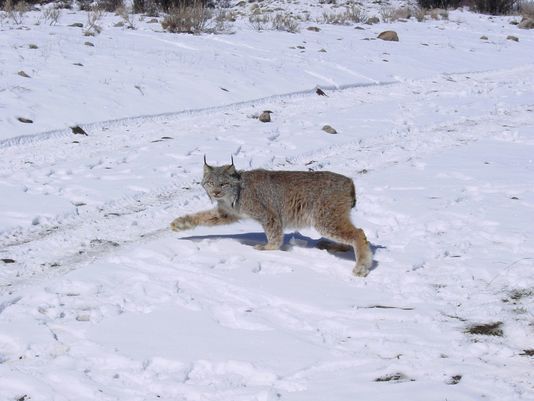Contact Noreen Walsh and demand that Fish and Wildlife Service retract its recommendation to delist the lynx! The science, facts, and law require a recovery plan for this imperiled species, not the complete elimination of protections.
Noreen Walsh,
Regional Director, FWS Mountain-Prairie Region
Telephone: (303) 236-7920
Email: Noreen_Walsh@fws.gov
Street Address: 134 Union Blvd, Lakewood, CO 80228
Mailing Address: PO Box 25486, Denver, CO 80225
The U.S. Fish and Wildlife Service recently released a review of the status of lynx, which were listed as “Threatened” on the Endangered Species list in 2000. Now, in the new world of Trump’s fact-free, anti-science, war-on-wildlife administration, the FWS recommends removing lynx from Endangered Species Act protections completely, writing: “Considering the available information, we found no reliable information that the current distribution and abundance of resident lynx in the contiguous United States are substantially reduced from historical conditions.”
More: Agency says Canada lynx should be delisted
The agency does not even attempt to provide the public with an estimated current population number of how many lynx there are because the agency has no idea. Fish and Wildlife Service has no idea how many lynx there are for one simple reason; the agency no longer monitors lynx populations! What the agency, if it was being truthful, should have written in their report is: “Because we no longer monitor the population of lynx we have no evidence of how many lynx there are and therefore also have no evidence that lynx numbers are declining or increasing or doing anything at all. Also, because we have decided to ignore all of the historical records of lynx presence, we have no evidence of any change from historic conditions.”
Seventeen years ago lynx trapping was outlawed due to the Endangered Species listing, but lynx numbers continued to decline because past and current logging has destroyed the dense mature and old growth forests upon which lynx rely for reproduction and survival. Lynx can no longer be found in the Gallatin Range and lynx numbers are falling in the Seeley-Swan Valley, which is the largest lynx population in Montana. Until 2010 there was also still a resident population of lynx in the Garnet Mountains northeast of Missoula. They had most likely been living there since the last Ice Age, but now they are gone as well.
What we do know is that the last estimate of the number of lynx in Montana by Dr. John Squires, a Forest Service lynx scientist, was that there were about 300 lynx in Montana. What the FWS should have done to determine whether the population has declined from historic conditions was ask Montana’s Department of Fish Wildlife and Parks, which estimated there were 700 to 1,050 lynx throughout Western Montana in 1994. This means there has certainly been a decline.
Additionally, as to habitat, the Fish and Wildlife Service’s own scientist, Megan Kosterman, found that 50 percent of each lynx home range must be mature, dense forest to provide optimal habitat for lynx to breed and raise kittens and that no more than 15 percent of each lynx home range should be clearcut. Not a single National Forest is complying with this recommendation. What is the impact of that failure on population trajectories? FWS ignores this issue.
The truth is that FWS is only arguing that lynx should be delisted because of a court deadline this week that required that FWS finally, after 17 years of delay, produce a recovery plan for lynx. Rather than produce the court-ordered recovery plan by the deadline, FWS simply filed a document arguing that lynx no longer need any protections under the Endangered Species Act, and therefore FWS does not need to produce a recovery plan. This is a transparent attempt to evade the law. We urge you to contact FWS and demand that they revoke their delisting recommendation and produce the recovery plan that the law and science require.
—Mike Garrity is the executive director of the Alliance for the Wild Rockies.
